Rules for pruning remontant raspberries
When cultivating shrubs, it is necessary to take into account the peculiarities of agricultural technology. So, correct pruning of remontant raspberries allows you to regularly get high yields of tasty fruits and preserves the health of the berry for a long time.
Raspberries of common varieties go through a full development cycle in two years, for remontant varieties, the process lasts a year. The main difference is that the bushes can bear fruit on both annual and two-year shoots. As a result of this ability, it is possible to harvest twice - in summer and autumn.
How to grow two crops of remontant raspberries?
The first harvest of remontant varieties can be obtained in summer. They begin to bear fruit earlier than regular raspberry bushes. The second time, the plants will delight you with delicious berries almost until frost. To do this, when growing, the main feature of such a raspberry is used - a two-year development cycle.
Young bushes in the year of planting will delight you with the first berries in August. If the shoots are not completely cut off the next year, then in the summer they will bear fruit again. The second harvest will be given by annual sprouts that will grow this year.
This way of growing raspberries has its advantages and disadvantages. The fruiting period stretches throughout the season and lasts until the onset of cold weather. The first raspberry harvest is abundant and early. However, in autumn the situation changes: the fruits lose their taste, become smaller, and the yield decreases. This is due to the fact that the berry loses a lot of energy for the first fruiting.
To grow two crops of remontant raspberries, healthy annual shoots are left, and proven, abundantly fruiting varieties are chosen. It is advisable to use this method in warm areas with short winters. The mild climate with a long growing season of plants allows the second harvest to ripen, and the bushes have time to prepare for the cold season.
It is easier to get double yields from early to mid-range remontant raspberries. The first berries ripen on such bushes in July, the fruits of the second harvest ripen until frost.
Popular early varieties:
- Hercules;
- Eurasia;
- Apricot.
Mid-season varieties:
- Golden autumn;
- Orange miracle;
- Mulatto.
Advice
When cultivating remontant raspberries in this way, two-year-old stems are completely removed immediately after fruiting, in the middle of summer. Young shoots must be rationed. Weak branches are removed, which do not have time to woody in the cold, and replacement shoots located close to the root.
How to get large berries?
This method has become more widespread and is popular with experienced gardeners. The bushes are completely pruned in the fall, after fruiting. Plantings of remontant raspberries hibernate practically without an aerial part.
New shoots will grow in the spring. These annual branches will grow and mature during the growing season. They will have time to bloom and will delight you with a high yield of tasty and large berries.
This cultivation has other benefits as well.
- There are fewer pathogens on one-year-old shoots, because with complete pruning, they cannot overwinter on the bushes.
- The activity of most pests coincides with the ripening period of ordinary raspberries, and such a crop will be formed later, so the berries are less damaged by various parasites.
- The method is ideal for beginner gardeners: there is no need to choose which branches to leave for the winter.
For a one-year growing cycle, any raspberry varieties are suitable, including late-ripening ones, the harvest of which begins to ripen in August or September.For example, Morning Dew, Erica, and Heritage.
When and how to prune?
Before pruning remontant varieties, you should decide on your personal preferences. You need to be ready to sacrifice either the quality of the berries or the ability to consume remontant raspberries throughout the entire fruiting season. Depending on this, one of two pruning methods is chosen.
- Two-year cycle for long-term fruiting.
When choosing this option, working with remontant varieties resembles manipulations with ordinary raspberries. In autumn, shoots of the current year are left on the bushes. Young, thin and dry biennial branches are harvested. Strong and ripe lashes are pinched, removing about 10-15 cm of the tops. The optimal distance between adjacent specimens is about 60 cm; excess trunks are removed with a pruner or a shovel.
After wintering, sanitary pruning is carried out on the site. Work begins during the swelling of the eyes, when all injured and frostbite areas are clearly visible. In this case, the plants have time to get saturated with useful substances that are synthesized during the budding process. The bushes begin to wake up quickly and develop actively.
In the spring, in April, part of last year's branches are cut to a healthy bud, dry and damaged shoots are removed. In strong branches, the tops are not pruned - this delays the ripening of the berries, reduces the yield.
If desired, in May, pinch the top of the two-year processes. The berries will appear later, but the branches will bear fruit longer.
Double pruning is considered more difficult. At the same time, the stems that have reached a meter height are cut off twice - in early spring and autumn. 20-25 cm of the top is removed, which stimulates the development of lateral shoots, increases the number of berries. With this care, the distance between the bushes should be at least 70 cm.
- Annual cycle for large berries and bountiful harvests.
With this cultivation, the main advantage of remontant raspberries is taken into account - the ability to bear fruit on the branches of the current year.
Bushes at the end of the season are cut completely to the root. This is done later than in areas with regular raspberries. The term of work is approximately 1-2 weeks after harvest, before the onset of frost, in October or November. Such pruning will protect plants from various pests and pathogens - they are removed along with the aboveground part of the bushes. The raspberry will keep its strength for a good harvest next season. Plantations winter well and do not freeze out; in the absence of a ground part, it is quite easy to cover them.
All cut branches are taken out of the raspberry tree and must be burned. Together with them, numerous pests and disease spores are destroyed.
Sometimes shoots are left for the winter to keep snow on the raspberry tree. In this case, they are completely pruned in early spring, before bud break. If you are late with work, then the plant will waste energy on the development of "extra" branches.
Advice
In raspberry bushes planted this year, it is not recommended to carry out full autumn pruning of the stems. Young plants are shortened, leaving about 20 cm. This gives the shoot the opportunity to receive additional nutrition through photosynthesis before the onset of cold weather, strengthens the immunity of the young specimen and contributes to the formation of a strong root system. A full haircut is carried out only in the next growing season.
Growing features
In addition to proper pruning, when caring for remontant raspberries, the following features are taken into account.
- high and stable yields can be obtained only on fertile soils and in illuminated areas;
- raspberries need abundant watering, especially during fruiting;
- the roots are close to the surface of the soil, so the earth is not loosened deeply;
- it is useful to mulch the soil;
- timely feeding will help to increase the yield.
Preparing for winter
Correct pruning at the end of the growing season has a positive effect on the yield and vitality of the berry.Too early work, a month and a half before frost, can provoke the germination of dormant buds on the roots of raspberries. Untimely pruning weaken the bush, worsen winter hardiness and negatively affect the quality of the next year's harvest.
When preparing remontant raspberries for winter, they adhere to this scheme.
- In a one-year growing cycle, all branches are completely removed at a height of about 3 cm.
- At what height to cut the shoots with a two-year growing method, you can determine by careful examination of the branches. Two-year-old shoots that have fruited are removed completely. In a strong one-year-old shoot, pinch the tops a little, adjust the height in the spring. Some varieties of remontant raspberries produce a lot of root growth. It is not recommended to leave more than 10-15 stems per square meter of berry. If they want to get two harvests from the plants per season, then one- and two-year shoots are left in a 1: 1 ratio. After pruning, about 6 viable stems usually remain on one bush.
- The site is freed from mulch, cut off parts of plants.
- Water-charging raspberries are carried out, the soil is carefully loosened.
- Mulch the earth with humus.
- Before frosts in regions with a cold climate, the stems are bent to the ground, pressed with boards and covered with dry leaves.
Advice
In areas with warm and short winters, it is better to postpone the autumn pruning of remontant raspberries to spring. Under favorable conditions, raspberry shoots continue to develop after fruiting, accumulate useful substances for the next year.
A bountiful harvest of delicious berries is an excellent reward for competent care of remontant raspberries. With the correct cultivation of such varieties, the plant will generously reward both an experienced gardener and a beginner with its juicy fruits.
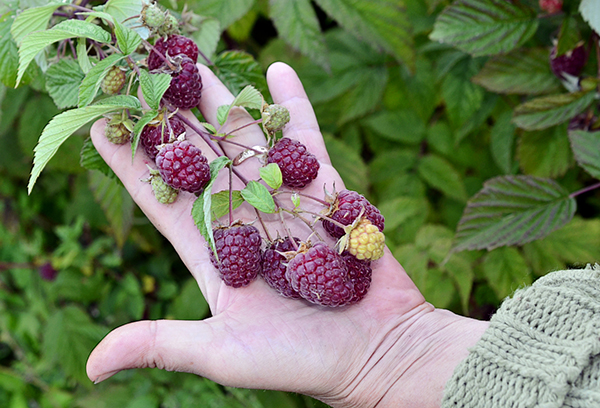
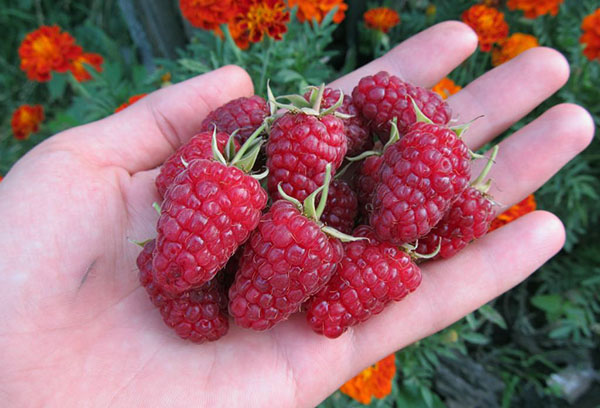
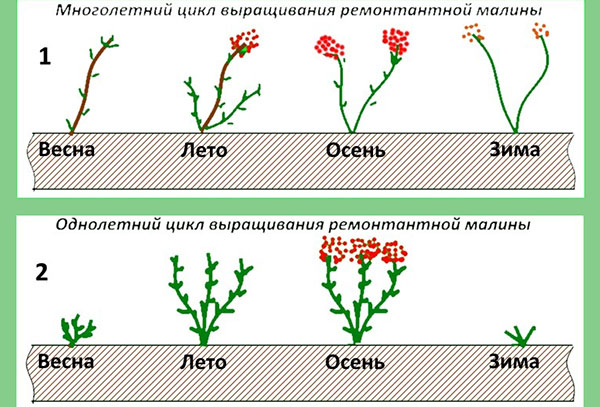
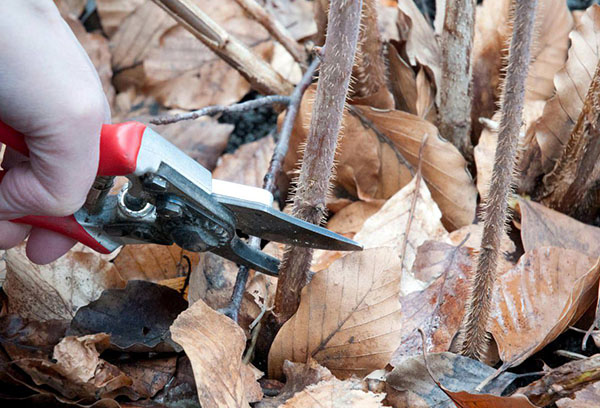
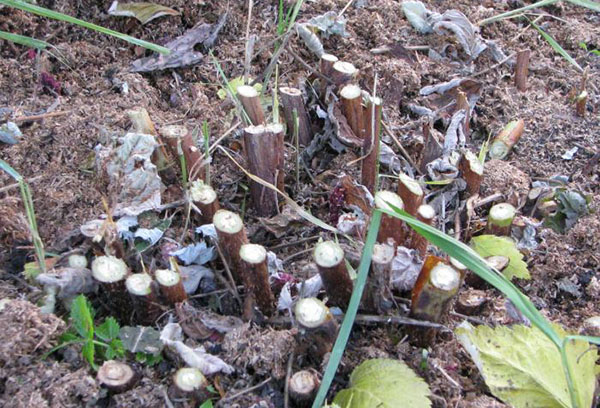

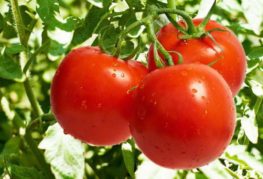
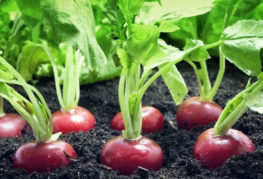

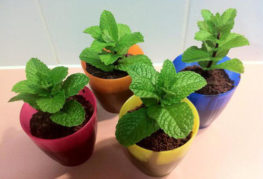
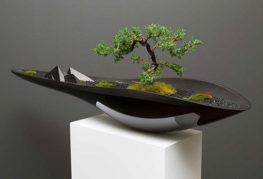
and will be published shortly.